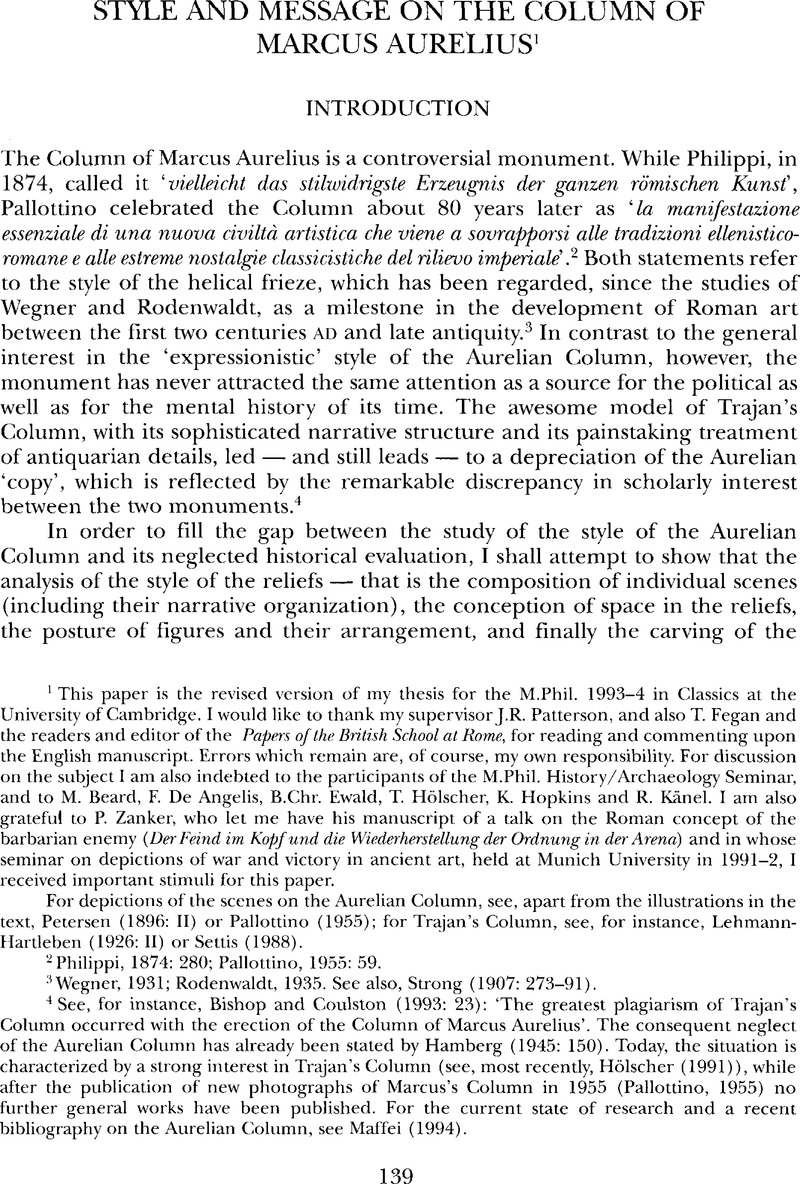Article contents
Style and message on the Column Of Marcus Aurelius1
Published online by Cambridge University Press: 09 August 2013
Abstract

Information
- Type
- Articles
- Information
- Copyright
- Copyright © British School at Rome 1996
Footnotes
This paper is the revised version of my thesis for the M.Phil. 1993–4 in Classics at the University of Cambridge. I would like to thank my supervisor J.R. Patterson, and also T. Fegan and the readers and editor of the Papers of the British School at Rome, for reading and commenting upon the English manuscript. Errors which remain are, of course, my own responsibility. For discussion on the subject I am also indebted to the participants of the M.Phil. History/Archaeology Seminar, and to M. Beard, F. De Angelis, B.Chr. Ewald, T. Hölscher, K. Hopkins and R. Känel. I am also grateful to P. Zanker, who let me have his manuscript of a talk on the Roman concept of the barbarian enemy (Der Feind im Kopf und die Wiederherstellung der Ordnung in der Arena) and in whose seminar on depictions of war and victory in ancient art, held at Munich University in 1991–2, I received important stimuli for this paper.
For depictions of the scenes on the Aurelian Column, see, apart from the illustrations in the text, Petersen (1896: II) or Pallottino (1955); for Trajan's Column, see, for instance, Lehmann-Hartleben (1926: II) or Settis (1988).
References
- 14
- Cited by

